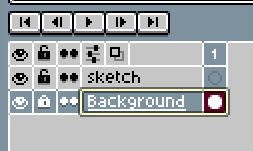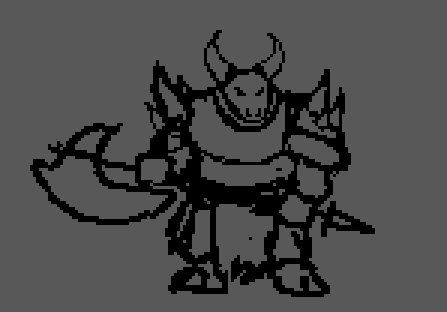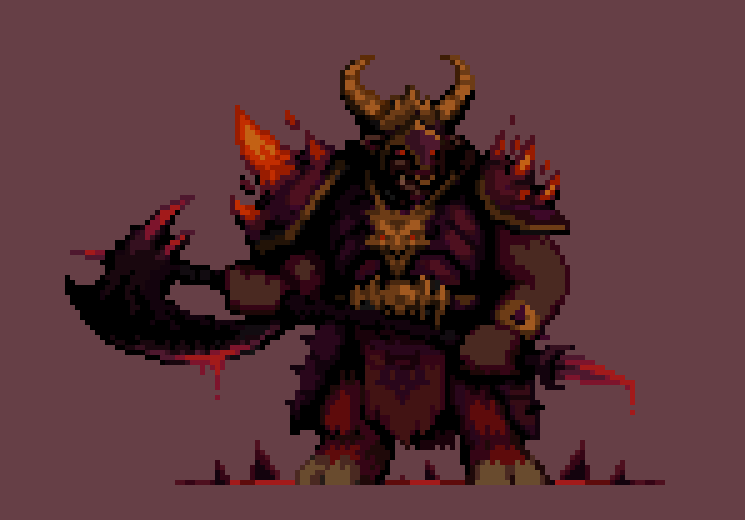Hello everyone! I've been wanting to make a blog about my monster spriting process in Aseprite. I've wrote some similar blogs to this before but I think this one will probably better explain how I sprite any monster in general, so let's just go over it here, starting from the beginning: sketching.
Why Sketch?
Let me ask you something. If you wanted to create an artwork without a sketch. Do you think you could you do it? Well it's actually possible! you could actually just go straight to drawing in all the final details on a canvas. But would that be easy if you don't have anything telling you where and how to draw in those details? For me, that's extremely difficult. That's exactly why we sketch!
What Is A Sketch?
I think of a sketch as visual information on a canvas that shows me, at least accurately enough, where and how I'm going to fill the canvas with details to complete an artwork. It doesn't matter if I'm drawing characters, environments, inventory items, or miscellaneous objects. For me sketches always serve the same purpose.
How Detailed Do Sketches Need To Be?
How detailed a sketch needs to be is entirely up to you, but the key idea is that it should tell you, again, where, and how to draw in details on the canvas. If your sketch is too simple, well you'll still mostly have the same problem: you don't know where and how to draw in the details on the canvas. If your sketch too detailed... that's great! Just be aware that the more detailed you want a sketch to be, the longer it's going to take. Why does that matter? I'm saying this because sometimes you're better of "half-detailing" a sketch, just so that your brain has enough of an idea of how to finish the drawing, and then jumping straight to drawing in the final details in full color. This way you will save time, and spending time wisely is important if you want to go professional or just want to get more art pieces finished.
How Can We Sketch?
I draw in Aseprite specifically, but all we need is a canvas and a layer to sketch on.

Just as an example, I'm going to use a finished drawing of a demon creature I drew recently called a hell guard (inspired by Doom and Diablo videogame series) and pretend I'm drawing him all over again, but it will explain what I typically do to draw any monster sprite, and this is the same idea if you want to draw a backgrounds as well, but if you ever plan to draw a monster and a background on the same canvas, then you're better off using two sketch layers instead of sketching the background and monster both on the same layer.
With that said, on the blank sketch layer I've just created for the monster, I would make the sketch! The goal of the sketch is to show basic information of the monster like the monster's pose, how bulky or how skinny he is, his footing, how he holds his weapon, and some breakdowns of the various parts. Sketching can take some time, but it's often more efficient to plan enough of the sprite first so that our brains can more accurately imagine how to finish the the sprite. Hold off on detailing or polishing until you can see where all the details roughly should go.

This sketch doesn't tell us the exact design this demon is going to have, but we can see where everything needs to go. We can see his weapon, his legs, his torso, his pauldrons, his head, etc.
Designing
This part is trickier because our sketch doesn't provide full design information. It just shows us the relative areas where we should be designing parts of the monster's sprite. This is the part where I do one of two things on a new layer above and in grayscale or monochrome:
A: I try to design the monster without references
B: I look up references, then design the monster
I'll often try 'A' first, run out of ideas, then try 'B', and this typically works for me. Pinterest is great for viewing monster art and organizing your favorites (No way to do that on Google images unless you save them to your device). For example, on Pinterest I have categories for demons, undeads, golems, and knights, and they are filled with endless kinds of respective creature designs, so I pretty much can't get stuck forever as long as I keep searching for inspiration to fill in the parts of the canvas that are missing.
Here are some possible designs he could have had. Some we're actual designs I've tried and some I just sketched for the sake of this tutorial.

Coloring and Polish
We don't need to get the grayscale/monochrome designs perfect and that can be time consuming, but what we do need is a polished monster sprite in full color. With sketches as detailed as these, I would just start trying colors on a new layer above and the coloring process is also when I decide what I want the final monster design to be.

Those are my thoughts about sketching a polishing monster sprites so I hope you found this blog helpful. Thanks for reading!

